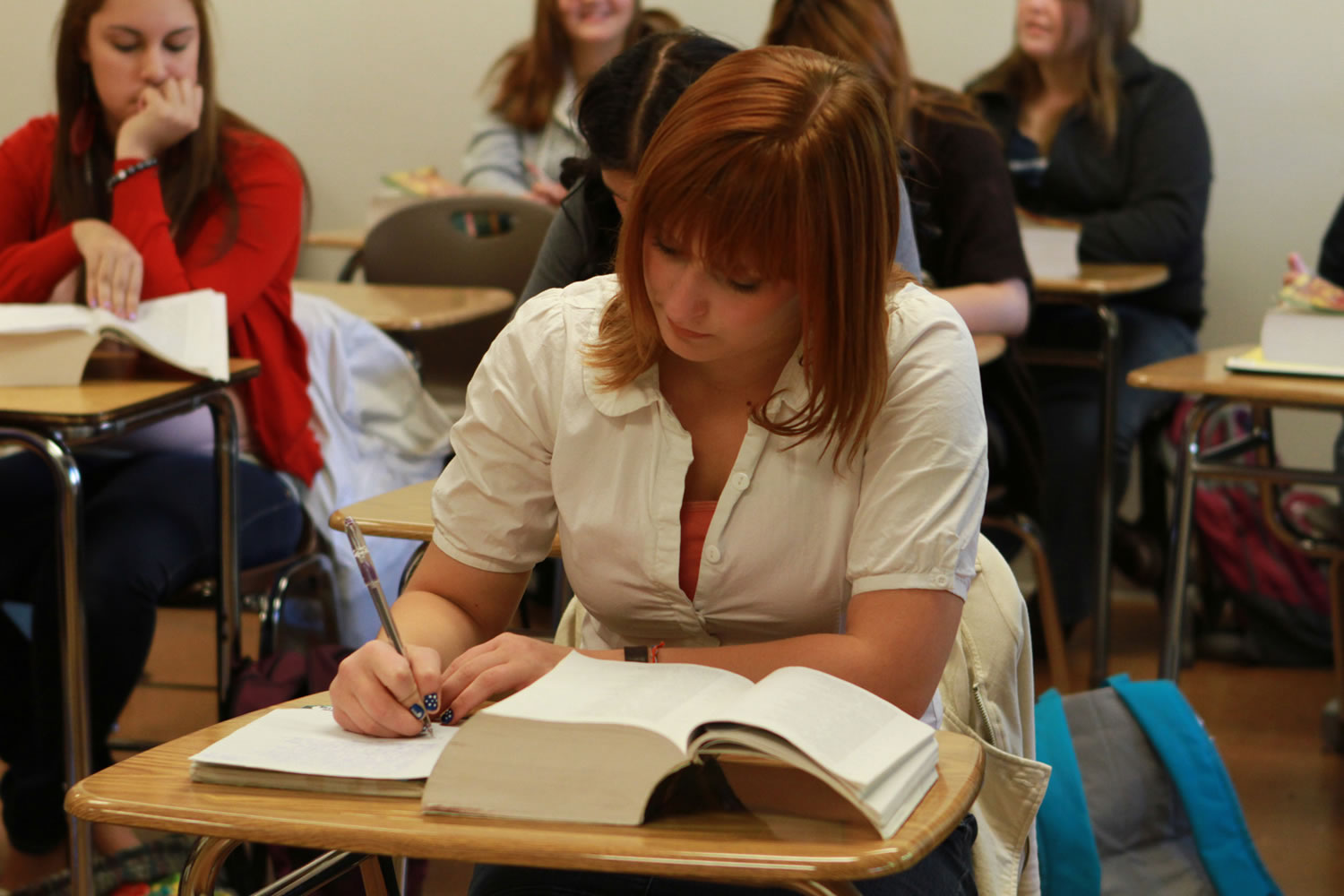This story was written by a staff reporter for The Independent, Clark College’s campus newspaper, as part of a collaboration with The Columbian called “Voices from Clark College.” It is also being published today in The Independent at http://clarkcollegeindependent.com.
Liana Gandarillas is halfway to earning a college degree and on track to begin a career in the Air Force — and she’s still in high school.
Gandarillas, 17, is one of 1,820 Running Start students taking advantage of two years of tuition-free college education at Clark College. Enrollment in the program is up 9 percent from last year, and Running State now accounts for about 13 percent of Clark’s student body of almost 14,000 students.
The program’s growth continues a trend that began in 2000 of more students and families taking advantage of the program as higher education costs rise and household incomes stagnate or decline. Running Start, now in its 20th year, allows Washington high school students who qualify for college-level reading, writing and math work to take courses at community and technical colleges, where they earn both high school and college credit.
The program isn’t without drawbacks. Some students and instructors complain that the high school students aren’t ready for the college classroom. School districts are required to reimburse the colleges for their costs, reducing funds for high schools already strained by years of budget cuts.
Gandarillas, who plans on pursuing an English major as a prelude to a writing career following military service, finds the rigor of early entry to college academics satisfying.
“I love it!” she said. “Most people here are here because they want to be, where in high school you’re forced to be there.”
Most students succeed
Gandarillas has been successful in her academic work. Last year, she was named to the Vice President’s List, an honor reserved for students earning a GPA of 3.75 or higher.
In total, 175 Running Start seniors earned Associate of Arts degrees concurrent with their high school diplomas in June of this year. Of those, 60 percent graduated with honors.
Students who take advantage of the program are not charged tuition, but they are responsible for the cost of fees, books and transportation. Those from low-income families can have fees waived.
Gandarillas and other students who take the maximum allowable 15 credits per quarter at Clark will save about $7,500 in tuition over two years. The average Running Start student enrolls in slightly less than 12 credits at the college and takes a few courses at his or her high school.
Most Running Start students will transfer to universities after graduation. Those students who would have attended a four-year public university away from home reap substantial savings with Running Start — sometimes upwards of $50,000 once two years of tuition, residence halls and dining costs are tallied. Gandarillas, who previously attended Heritage High School, plans to use education benefits earned as a part of her military service to pay for the remainder of her education after her military service.
High schools are required to reimburse colleges on the basis of each student’s enrollment. The annual rates are currently set at $4,961 for students in academic programs and $5,856 for those in vocational programs.
Reimbursement rates are set annually by the Washington Superintendent of Public Instruction, who oversees the state’s K-12 schools. This can add up to large payments for the school districts — Vancouver Public Schools reported 269 full-time equivalent Running Start students last year, totaling more than $1.3 million in funds paid to colleges.
Those funds provide an important boost to Clark’s budget, said Bob Williamson, vice president of administrative services.
“It has been important to our budget, particularly in the last three or four years as state direct support has gone down and we’ve become more dependent on tuition and Running Start students,” he said.
Money collected for the Running Start program is used to support nine full-time and 170 adjunct faculty positions at Clark. One side benefit to traditional students at the college is a wider selection of class sections to choose from, according to Ray Korpi, dean of basic education, English, Communications and humanities.
“We offer more of those sections because the Running Start students are there,” Korpi said. “You’re meeting the demand of what’s there but you’re able to expand the offerings.”
The flip side is that some classes that fulfill both high school and college requirements can fill up quickly with Running Start students, leaving some older students struggling to find spots and creating a high school atmosphere in a college classroom.
“We’ve had instructors complain that they feel like they have to accommodate for it,” said Korpi. “They don’t feel a class with a high percentage of Running Start students is as prepared.”
However, Clark’s policy is that Running Start students are treated exactly the same as any other student. “You don’t change what you teach, you don’t adjust,” said Korpi.



